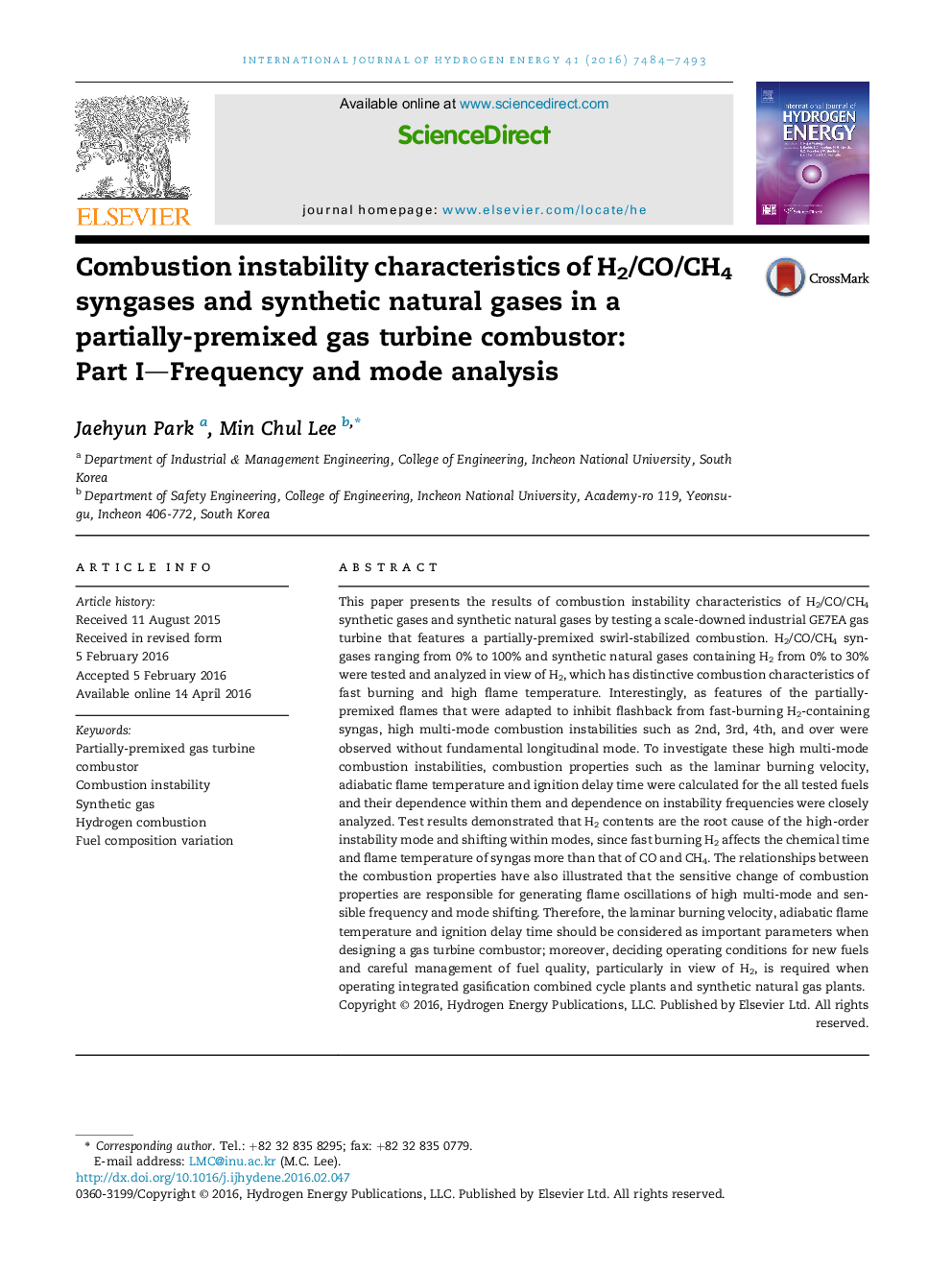| Article ID | Journal | Published Year | Pages | File Type |
|---|---|---|---|---|
| 1268701 | International Journal of Hydrogen Energy | 2016 | 10 Pages |
•Fuel composition sensitively affects amplitude, frequency, and mode of instability.•Partially-premixed H2 flame easily produces high multi-mode combustion instability.•Flame speed and temperature highly affected by H2 dominate instability mode.•Instability frequency is log-linearly proportional to flame speed and temperature.•Short period in high mode instability easily inverts the log-linear trend.
This paper presents the results of combustion instability characteristics of H2/CO/CH4 synthetic gases and synthetic natural gases by testing a scale-downed industrial GE7EA gas turbine that features a partially-premixed swirl-stabilized combustion. H2/CO/CH4 syngases ranging from 0% to 100% and synthetic natural gases containing H2 from 0% to 30% were tested and analyzed in view of H2, which has distinctive combustion characteristics of fast burning and high flame temperature. Interestingly, as features of the partially-premixed flames that were adapted to inhibit flashback from fast-burning H2-containing syngas, high multi-mode combustion instabilities such as 2nd, 3rd, 4th, and over were observed without fundamental longitudinal mode. To investigate these high multi-mode combustion instabilities, combustion properties such as the laminar burning velocity, adiabatic flame temperature and ignition delay time were calculated for the all tested fuels and their dependence within them and dependence on instability frequencies were closely analyzed. Test results demonstrated that H2 contents are the root cause of the high-order instability mode and shifting within modes, since fast burning H2 affects the chemical time and flame temperature of syngas more than that of CO and CH4. The relationships between the combustion properties have also illustrated that the sensitive change of combustion properties are responsible for generating flame oscillations of high multi-mode and sensible frequency and mode shifting. Therefore, the laminar burning velocity, adiabatic flame temperature and ignition delay time should be considered as important parameters when designing a gas turbine combustor; moreover, deciding operating conditions for new fuels and careful management of fuel quality, particularly in view of H2, is required when operating integrated gasification combined cycle plants and synthetic natural gas plants.
